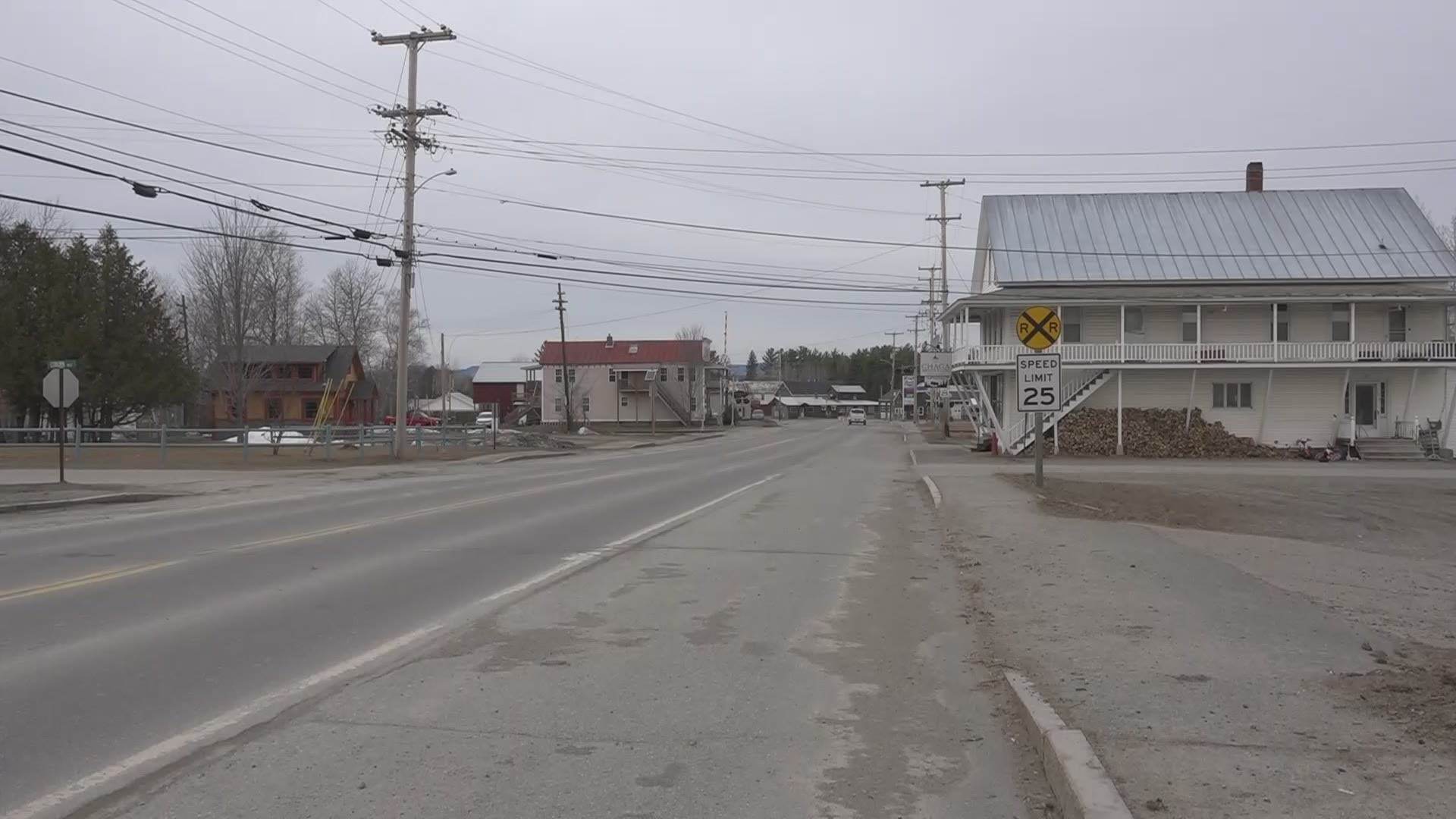JACKMAN, Maine — About 45 minutes away from Jackman on U.S. Route 201, cellphone reception drops. On this long stretch of road, surrounded by pine trees and the occasional pothole, the term "rural" takes on a new meaning. A logging truck passes by every few minutes, but other than that, it's quiet. Nestled among rolling hills is the small town of Jackman, made up of about 1,000 people -- maybe less. The downtown is lined by a couple of homes and gas stations. On the left-hand side is the only health care option in the area -- Jackman Community Health Center.
Across the nation, the pandemic has taken a toll on health care systems, as they struggle to keep up with the surge in patients. That problem isn't specific to the coronavirus in rural areas, though. Over the years, the Jackman Community Health Center has had a difficult time recruiting full-time medical assistants and physicians. As a result, providing 24/7 care to community members is challenging. Physicians typically need to be on-call after-hours and on the weekends -- a method that isn't sustainable.
"Being rural really is an interesting challenge," Butch Russell, CEO of North East Mobile Health Services, which serves this area, said. "We're at least an hour and a half to two hours away from the closest hospital."
A project four years in the making is designed to address these issues -- and it's finally taking off. Eight paramedics with NEMHS in Jackman are working to become Critical Access Integrated Paramedics and expand their skill sets by taking online courses with Eastern Maine Community College and completing clinical rotations at St. Joseph Hospital's emergency department in Bangor. The classes are divided into different modules, with reading, video lectures, and video clips, and end with a quiz or test. These paramedics will learn to do things like ultrasounds for diagnostic skills, wound care, casting, splinting, advanced assessment skills, and critical airway management skills.
The goal is that they will be able to provide care to community members after-hours and on the weekends to alleviate pressure on physicians. Paramedics will log onto iPads and iPhones (positioned on a headband) to use telemedicine with the team at St. Joseph Hospital's emergency department while addressing a patient's needs.
"As resources start to go away, communities are forced to look at taking care of that need," Russell explained.
"If we can keep you from having to go to a hospital two hours (away) for something that may take 45 minutes to address, then that's what we want to take care of," Jason Grey, a paramedic taking part in this program, said, noting he and his fellow team members cover an area with square footage the size of Rhode Island.
Dr. Jonnathan Busko, the medical director of the emergency department at St. Joseph Hospital, is the physician project lead for this program. He says the need for more sustainable health care in rural areas like Jackman is critical. This project isn't exactly a new endeavor, either -- in fact for Bukso, it has been 23 years in the making. Busko received his Masters degree in public health, and his thesis was about an expanded scope of service provided for the EMS. The Jackman model, which is unique to Maine, is based roughly on community health practices in Alaska, where Busko worked years ago.
"If you look at the top two predictors of community stability, they're health care and schools," Busko said about the project's importance, commenting on the "EMS urban/rural paradox" -- in rural areas, hospitals are farther away and there are fewer trained personnel.
Busko says this project was expected to increase taxes by about 30 percent for taxpayers in Jackman, the towns of Moose River Valley, and unorganized territories. Former town manager Victoria Forkus says they were able to find a way to work around that cost, though. The mil rate for Jackman in 2019 was $18.90 per $1,000 of property value. In 2020, the town utilized its ministerial funds to offset its obligation to the local school district, so the mil rate stayed the same. The municipal budget increased by less than one percent in 2021, but the Jackman selectboard is anticipating raising taxes by about five percent. That tax-rate won't be set until after the school district finalizes its budget.
The initiative is also being funded by a four-year, $1.2 million Health Resources and Services Administration grant received in September.
Every day, the finish line gets a bit closer.
"We're estimating that by September, we will be ready to not have physicians on call -- and to have the paramedics manning the clinic on a 24/7 basis, utilizing the telemedicine with Saint Joe's," Ellen Thurlow, project manager at Penobscot Community Health Care, said.
"This is a really good thing for paramedicine," Grey expressed. "It will show that we're capable of a lot more than we're being allowed to do."
Online EMCC classes for the paramedics began last week, and clinical rotations are expected to start soon. The Maine Medical Direction and Practices Board is reviewing content to decide the scope of paramedics' care by May or June. The goal is to have eight more paramedics take part in the program next year, too -- and build a model other small towns could follow in the future.
This story has been updated to reflect that taxes were not raised by 30 percent for Jackman-area taxpayers to accommodate this project, as originally anticipated.

